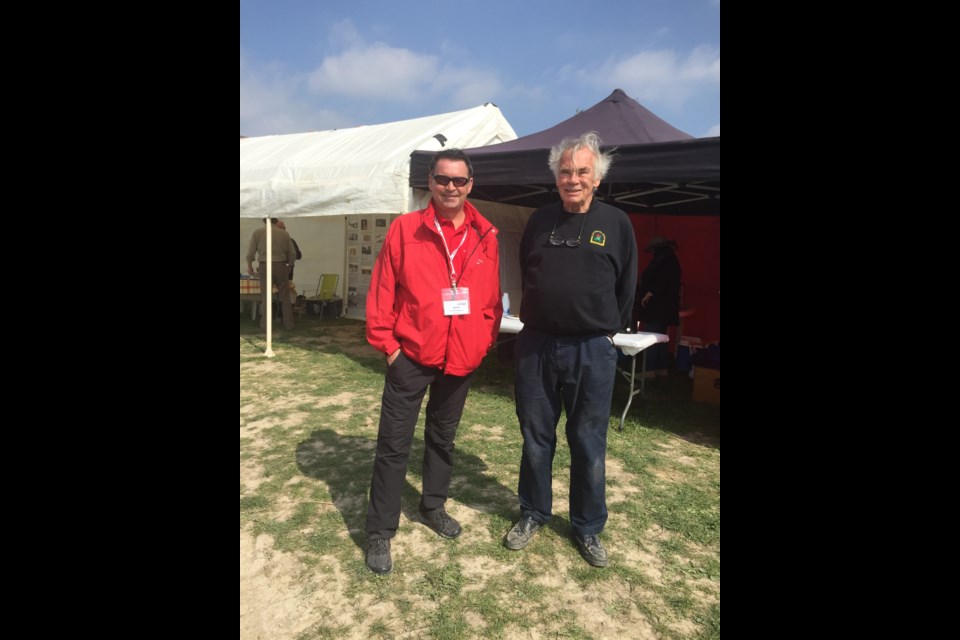By John Hetherington
In April 2017 I had the honour of leading a group of Seaforth Highlanders to France and Belgium on a battle honours 100th-anniversary tour. One of our stops was at a place called Maison Blanche near the western edge of Vimy Ridge. The visit was arranged for our group by the UK based Durand Group which is an association of individuals who have voluntarily undertaken to work together to research and investigate military subterranean features. Maison Blanche is one of eight underground shelters in the area used by Canadian soldiers in the days leading up to the battle of Vimy Ridge. Thousands of soldiers passed through theses caves called souterraines on their way to the front and they left behind intricate graffiti etched into the soft chalk walls.
Joining our group for the visit to Maison Blanche on that day was Glenn Kerr and his son Jacob from Uxbridge Ontario. Glenn is the President of the Central Ontario branch of the Western Front Association. I had met Glenn a year before when I attended a presentation on the Great War hosted by the association. Glenn was familiar with the tours that I design and lead to the battlefields of France and Belgium and was curious if I knew anything about the souterraine at Maison Blanche explored by the Durand group in 2007. I told him that I had been underground there on 3 earlier visits but it was accessible only by special permission and that I would be taking a group down the following year. Glenn had always wanted to get a glimpse of this underground souterraine. He told me that he and his son were going to be travelling in the area at the same time as our group so I invited him to meet us at the site. As it turned out this visit would take on greater significance than any of us knew when he returned home.
Glenn had a best friend in high school and his name was Gord Walker. Glenn was very close to Gords mother and last year she passed away. The two friends reconnected after her passing and Glenn informed him of the great deal of time he had spent exploring the Western Front. Gord had gone through his mother's possessions and found a Death Penny and a Memorial Cross. No one was aware of them and as it turned out, they belonged to her uncle, Private James MacPhail 15th Battalion CEF. He was killed in action on March 12th, 1917 and is buried at Villers Station Cemetery near Vimy Ridge.
Gord emailed Glenn and told him of his discovery in his Mother's effects while Glenn and his son were coincidentally in France. They quickly looked up the burial site and made arrangements for the last stop before leaving France to be at Villers Station Cemetery to pay their respects on behalf of Gord's family and to bring each of the 3 men a flag from home.
After returning home to Canada Glenn sent a note to retired General Greg Young who operates the 15th Battalion Memorial site and he opened a floodgate of information including the fact that the name of Private MacPhail was on the cave wall at Maison Blanche with 2 other men and all 3 had been killed together. There are over 1000 carvings on the souterraine walls at Maison Blanche and on the day that Glenn was there he had taken about 75 pictures. After a quick scan of his pictures, Glenn noticed that one of the pictures included an inscription with the names of MacPhail and the other 2 men killed on that day in 1917. Glenn sent the photos to Gord and he was so excited about the discovery. He now has a very unique piece of history to share with the rest of his family.
John Hetherington is a retired history teacher and regularly conducts tours to the battlefields of Europe.
He can be contacted at [email protected] or 705 492- 6975.



